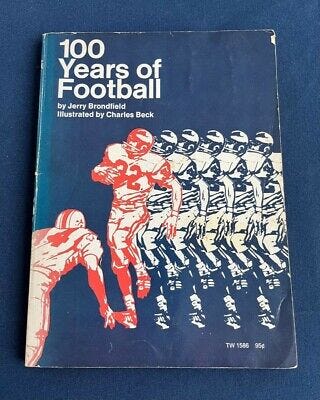The Beginning of Specialization In American Football
A glimpse at the real old days
The Beginning of Specialization In American Football
Among other things, the early 1880s led to the first real specialization in the history of American football.
Before Walter Camp, the sport was virtually identical to rugby, which at the time didn’t have much of a distinction between different playing “positions.” It was a mad scramble for the ball, something that closely resembled the “mob football” games of the old world.
When I was a kid, my dad had a copy of this old illustrated book:
Some of you might have read this book. If you haven’t, you’re in luck: I’m going to start using a bunch of illustrations and explanations from the book to explain things that are hard to find in contemporary newspapers.
Running with the ball as opposed to just kicking the ball seems to have been particularly popular in the United States and Canada in the 1870s:
This created a contrast with the rugby game in England, where kicking was still the emphasis. It also led to a disagreement among the most influential players of the game that lasted for decades — a disagreement that will become obvious when we get to the scoring rules of 1883.
Now, back in those days there weren’t many stops in play. Walter Camp’s great innovation was to stop play every time a player was down, and to allow that player’s team to retain possession.
This meant that a player needed to actually put the ball in play, which is where the concept of a “snapper” comes from:
Now, 100 Years Of Football does not mention that the words “scrimmage” and “scrum” are directly related. In fact, if you read rugby rules from before 1880, you’ll see the word “scrimmage” used where you would expect to see “scrum.” Camp’s invention was not the term scrimmage, but, rather, was the idea scrimmage.
Remember also that offensive players on the line would be offside as soon as the ball was snapped back. Because of that, and because blocking (or “interference”) was not a well established concept, it’s likely that most offensive players still lined up behind the ball carrier like in rugby.
By 1882, other positions had also slowly been established:
Although offensive and defensive plays had not really been established, positions started to become a thing at this time. Of course, all players played both ways, and substitutions were limited only to serious injuries.
If you’re interested in more and don’t want to wait, I strongly recommend reading Football Archaeology’s excellent series on 100 Years of Football:
This will help you read up on some of the parts that I deliberately skipped, and gives you a chance to skip ahead as well.
However, I should note that my scans appear to be superior and more legible.








